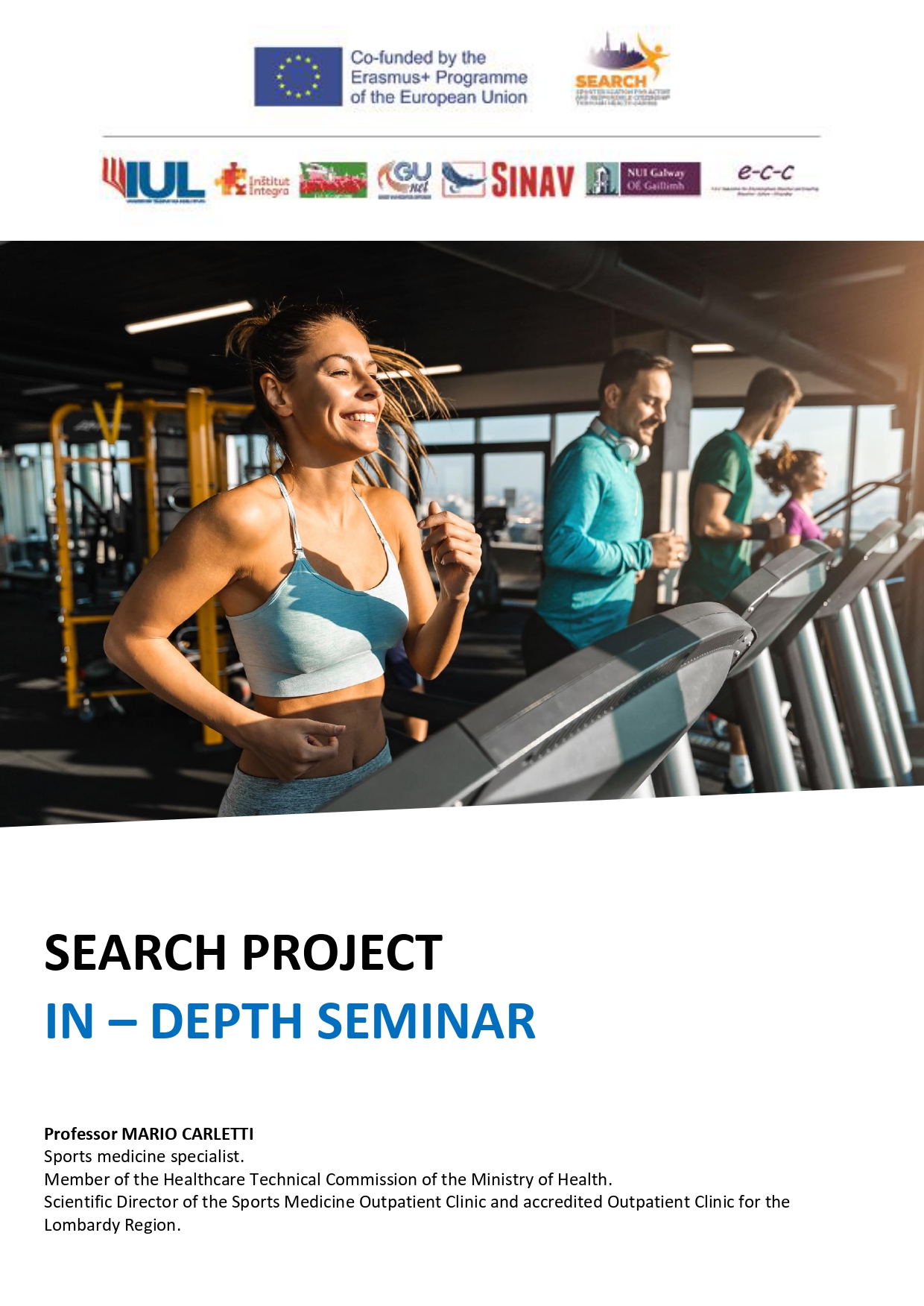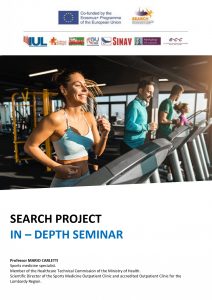Q 1: The researchers of the IUL University have shown that with minimal activity (30 minutes a day) you can have prevention that would lead to a figure of 1 billion and 400 million in public savings. This premise leads me to ask the 1st question: what are the risks of physical inactivity and a sedentary lifestyle, but above all what are the correct physical activity levels to keep in good health?
Good evening everyone and thanks for the invitation. To summarize the premise just made we could say “money less with fitness” that is, we save when we move. Introducing the concept of frequency of physical activity and which activity is not so simple, as the physical activity that is then declined in sport and also professional sport, should be like a tailored suit for everyone. Not all sports are good for everyone, a medical consultation is always necessary.
I take a step back to explain better. We as a society have decided not to behave as happens in the jungle, those with physical problems will not be abandoned but we as a society will take care of them economically and socially.
Precisely for this reason, we find ourselves supporting a social-health expenditure which at this moment is not sustainable in all socially and economically developed countries. So the question is: how to behave? The correct behavior would be to spend as few resources as possible for all preventable pathologies and leave a large sum of resources to deal with frailty, therefore protecting all people who need social and health care.
All this turns out to be very complicated for 2 reasons:
- Currently, the health organization provides for the use of technologies and medicines that in the space of a few years have upset humanity, in the sense that they have allowed us to survive over time but at the same time to make some chronic, non-communicable diseases but on which we as a society invest a lot of money;
- The situation is aggravated as the doctor is required to respond to all medical innovations at a low cost which increases the cost of public expenditure.
A good basis for the prevention of the entire population can be summarized in 3 points: prohibit smoking, a minimum of physical activity, and good nutrition.
These 3 conditions should be enough to shift public spending from chronicity to dying of old age but in health. So adopting a healthier lifestyle can be the solution to reduce public health spending, if this change is not implemented, unfortunately only the richest will remain to be able to cure themselves.
Just think that in this moment of pandemic enormous health resources have been stolen from the poorest countries. All countries that funded basic vaccines in poorer areas have now shifted their economies into the pandemic. There are therefore enormous economic movements. So, I repeat, promoting a healthy lifestyle that saves money and making it clear that that savings, if necessary, can be used to cure you, can be a good lever.
The school should play a fundamental role in this. Promoting a healthy lifestyle must also be the task of the school and above all make it clear that the advantage is not only for the individual but for the community. There is no one recipe for everyone, but what unites us is the constancy in having a healthy lifestyle.
In recent years, very intelligent forms of communication have been used. For example, the food pyramid where according to your physical situation the recommended foods are put as a basis and those not recommended at the top. Visually it is very effective. Then there was the less effective formula of 100 steps a day, which has not been scientifically proven that they are good for everyone in the same way. This is to say that the level of physical activity depends a lot on the person. The most complicated thing is to get people to start, because then once they have experienced the resulting well-being, everyone will no longer be able to do without it. Starting young and having consistency is essential to prevent many diseases even in old age.
Q 2: In Italy, 41.4% of the adult population does not exercise enough, the age group 25-34 is the watershed as sportsmen decrease and sedentary people increase. Is it therefore necessary to intervene first? How can we change the approach to sport for children?
That’s right, those who learn to play sports do it in primary schools. And it is essential that the teacher is supported by the sports federations. If the latter went to schools promoting their activities, even for children with disabilities, we could begin to create a mentality in the younger ones. Sport in schools must be rewarded not penalized.
Q 3: Have you never even thought about a structural approach?
Not that I know of. The argument we have made many times is that if the teacher is not trained or supported externally, it is difficult for him to have the technical knowledge to then pass on to the pupil.
Q 4: However, not always “forcing” the boys to play team sports and therefore competing with the others is “healthy”. Wouldn’t it be better to let the boy play freely and wait for him to want to start?
I agree with you very much but in any case, the child must be approached to the movement. The only sport that I believe should be a must is swimming.
Q 5: What is missing is both pedagogical training for teachers to approach children effectively and a management structure that promotes sport?
It is precisely here that we must all work together; the numbers mentioned above show that the health system does not hold up. It should be understood that promoting the sport is not an expense but an investment; until an effective method is found to reduce health care costs, it is our individual behaviors that make the difference.
Q 6: I would like to point out one aspect. We as teachers do our best with schools and with the mindset regarding the promotion of an active lifestyle. However, I believe that a change of mentality in the structural and political approach for sport in Italy is fundamental. Let me explain: if I only have 2 hours of activity with a class, I have only one potential in hand, while if I had more hours available I would have greater potential as I could articulate more didactic stimuli on several levels. So we give our best but a change of mentality in favor of sport would help us, a lot.
We all have to do the change of mentality, without exception. We have to think about how to set up a program then translated into practice, starting with the 3 actions listed above: do not smoke, exercise, and have a healthy diet. Individually we cannot do anything decisive but all together we can change the common mentality.
Q 7: I would like to move the prevention discourse also to the Covid-19 theme. We have all heard many times that people affected by the virus with previous illnesses were the ones with the worst consequences. Why, has no one ever explained why the previous pathologies and how to avoid or prevent them?
Communication in health care is a very big problem, look for example at the information on the virus itself. Furthermore, in the midst of the pandemic, it is also difficult to talk about other pathologies. However, from this situation, we can learn to change the mentality and therefore have a healthy lifestyle also to better face dangerous situations.


